The colour green features strongly in the flag of independent South Africa, but the ties are stronger than that.
Irish people have a vague knowledge of links between the two countries. Of the Irish anti-apartheid campaign, of two lawyers, Kader Asmal and Albie Sachs, spending a wet weekend in Foxrock, Co Dublin, drafting the South African Bill of Rights, with Kadar dodging outside every 30 minutes to smoke as his wife Louise didn’t want him smoking in her house.
This document was incorporated into the constitution of a democratic South Africa, and it was hammered out on the kitchen table of the Asmal house at 20 Beech Park Road. Albie Sachs survived an attempt on his life in which he lost an eye and an arm; he later became a judge of South Africa’s highest court.
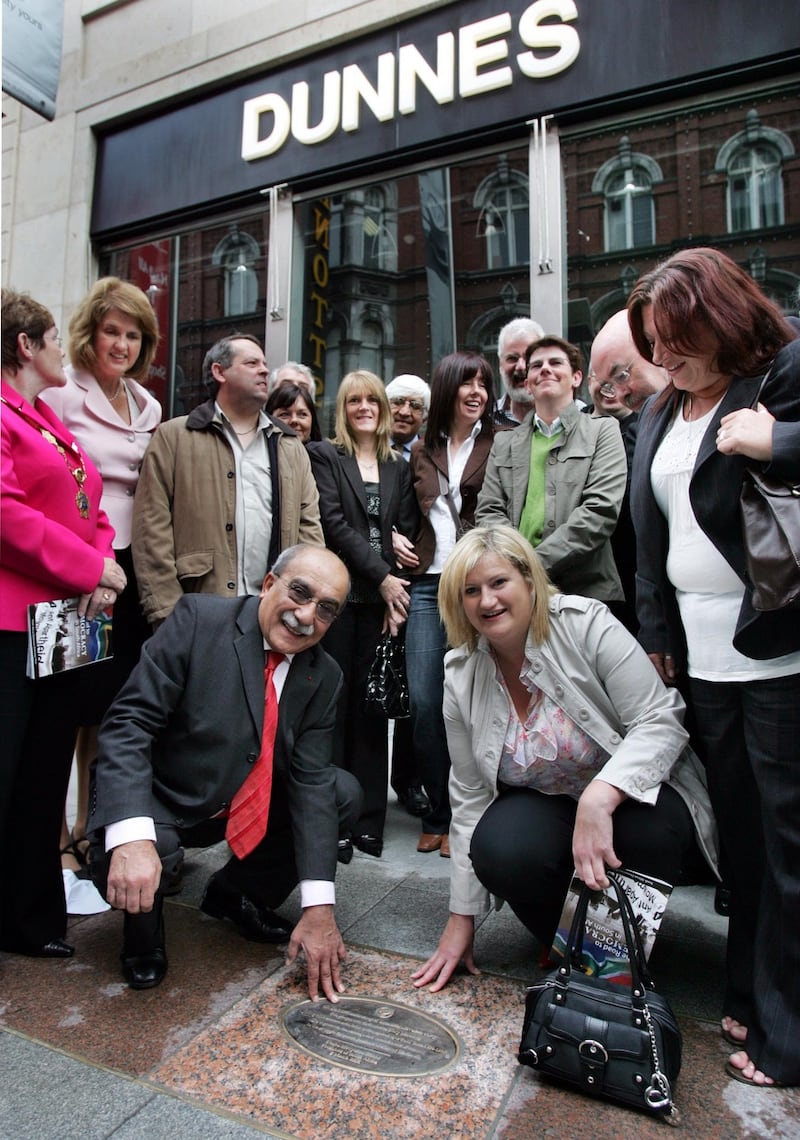
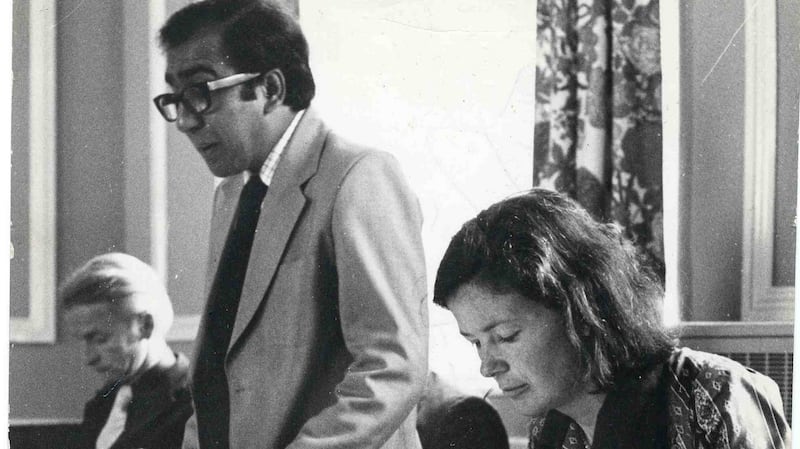
Asmal founded the Irish Anti-Apartheid movement and campaigned effectively for 25 years, using boycotts of white South African produce and visiting rugby tours to build a protest campaign against brutal white domination in a black man’s country. Older readers will recall Mary Manning and her shop assistant colleagues in Dunnes Stores going on strike in the 1980s against being forced to handle South African produce.
Nelson Mandela’s visit to Ireland in 1990 to thank his supporters was a joyous occasion. There’s also awareness of John Robbie, an Irish rugby player who settled in South Africa and became an outstanding broadcaster on Radio 702, but Paddy O’Byrne from Dublin who won the Voice of South Africa competition in 1961 became a bigger name.
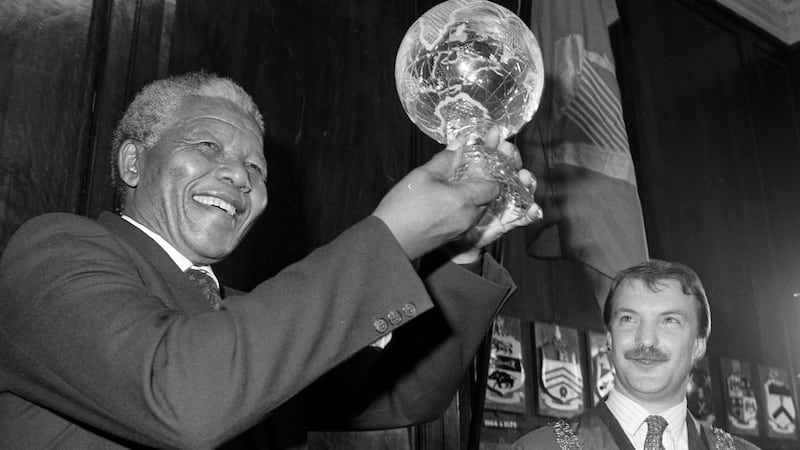
At the beginning of the 20th century some 60,000 Irish lived there; only about half that number can claim to be Irish today. “There are more South Africans living in Ireland than there are Irish living there today,” according to Prof Donal McCracken of the University of KwaZulu Natal.
“Few in Ireland associate South Africa with Irish settlement, outside of the missionary endeavour.” The collection boxes for “black babies” at the church door on the way into Sunday Mass are a fast-fading memory.
In the 19th century South Africa did not attract mass Irish migration, unlike America. However, Irish communities existed in Cape Town, Port Elizabeth, Kimberley, and Johannesburg. Many who “bore the white man’s burden” as administrators in British colonial service were Irish, like the Derry-born novelist Joyce Cary in Nigeria.
A third of the Cape’s governors were Irish, as were many of the judges and politicians. The Cape Colony and the Colony of Natal had Irish prime ministers: Sir Thomas Upington, “The Afrikaner from Cork”; and Sir Albert Hime, from Kilcoole in Co Wicklow. That generation of Irish migrants lives on in place names such as Upington, Caledon, Cradock, Sir Lowry’s Pass, Belfast and Donnybrook.
McCracken says that though the Irish were few in number, being relatively well educated, and largely concentrated in specific occupations increased their impact. They stuck together, helped each other and gave jobs to other Irish immigrants, regardless of religious background.
“They congregated in certain trades and professions where they made their mark – the railways, the mounted police, the mines, and the great Irish retail stores, John Orr’s, RH Henderson, Cuthbert’s boot and shoe emporium etc,” McCracken told a diaspora conference in Dublin in 2017. Their presence in the department store sector seems to be a particularly Irish South African phenomenon, created by Ulster Protestant migrants. In the 1890s the railways and the diamond and gold mines also absorbed large numbers of Irishmen.
In 1837, Raymond Griffith, a Dominican from Co Wexford, was appointed first bishop of South Africa. The missionary presence was to become especially strong in the Eastern Cape. Irish journalists worked on major newspapers; Frederick St. Leger, founder and editor of the Cape Times being the most prominent. Predictably there were the Irish in the police. It was said that on the streets of Cape Town, Irish accents among the police were as common as they were in New York and Boston.
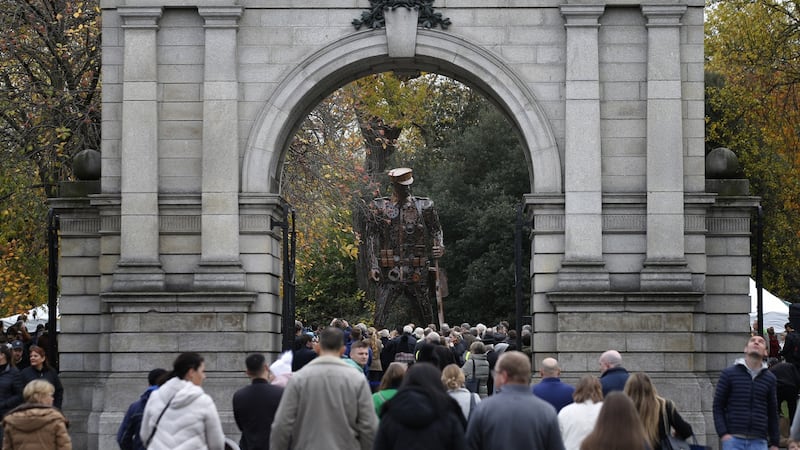
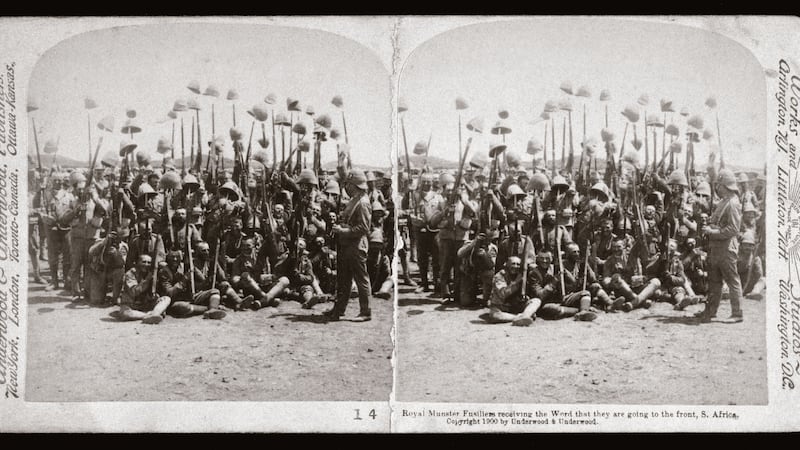
In the colony of Natal at the end of the 19th century, only 2,000, or 3 per cent of the white population, were Irish. Yet when Major John MacBride, (husband of Maud Gonne and father of Sean) and his Irish Brigade joined the Boer rebel forces in 1899 and made haste to loot the town of Newcastle, they were attacking a very Irish entity. Newcastle was founded by Dr Charles O’Grady-Gubbins of Limerick; in the Crown Colony of Natal the governor was Irish, the prime minister was Irish, the chief justice was Irish, the attorney general was Irish, and the chief military garrison commander was Irish too.
McCracken, who promotes cultural awareness between South Africa and Ireland, enlivens his history lectures by singing this soldier’s verse about the siege of the British forces at Ladysmith in 1899 to the tune of The Wearing of the Green.
And I met with White the general and he’s looking thin enough,
He says the boys in Ladysmith are running short of stuff,
Faith the dishes need no washing no washing now they’re left so nice and clean,
Oh, it’s anything but pleasant to be starving for the Queen.
That siege lasted four months, with the Irish on both sides, as so often happened in colonial wars. The Royal Irish and the Royal Dublin Fusiliers were among the British forces attempting to lift the siege, succeeding at the end of February 1900. MacBride and his Irish Brigade fought with the rebel Boers. A major Dublin landmark – Fusiliers’ Arch at the entrance to St Stephen’s Green in Dublin – commemorates Irishmen who lost their lives fighting for Britain in the second Boer War, though few who pass that way today know why it is there.
Today, Irish traces still abound in South Africa. The late Paddy Purtill was a prominent force in construction and in Irish émigré circles. A millionaire (when that really meant something) diamond miner, Harry Oppenheimer, was not Irish but his wife Bridget (nee McCall) of Irish stock was the “Queen Mum” of South African racing. A leading breeder of champion horses, she died in 2013.
If you want to buy a nice mid-price house in Johannesburg, the suburb of Parkview might appeal; the streets are called after Irish counties. Perhaps you fancy living in style in what was once known as the Hollywood of South Africa? Another well-heeled Jo’burg suburb, today it is better known simply as: Killarney!
Co Wexford-based writer William Paterson’s novel The Snake in the Signal Box, the first of a trilogy about the Kirkwood family in southern Africa in the 20th century is now available from Amazon, with a new foreword by historian Thomas Pakenham.












